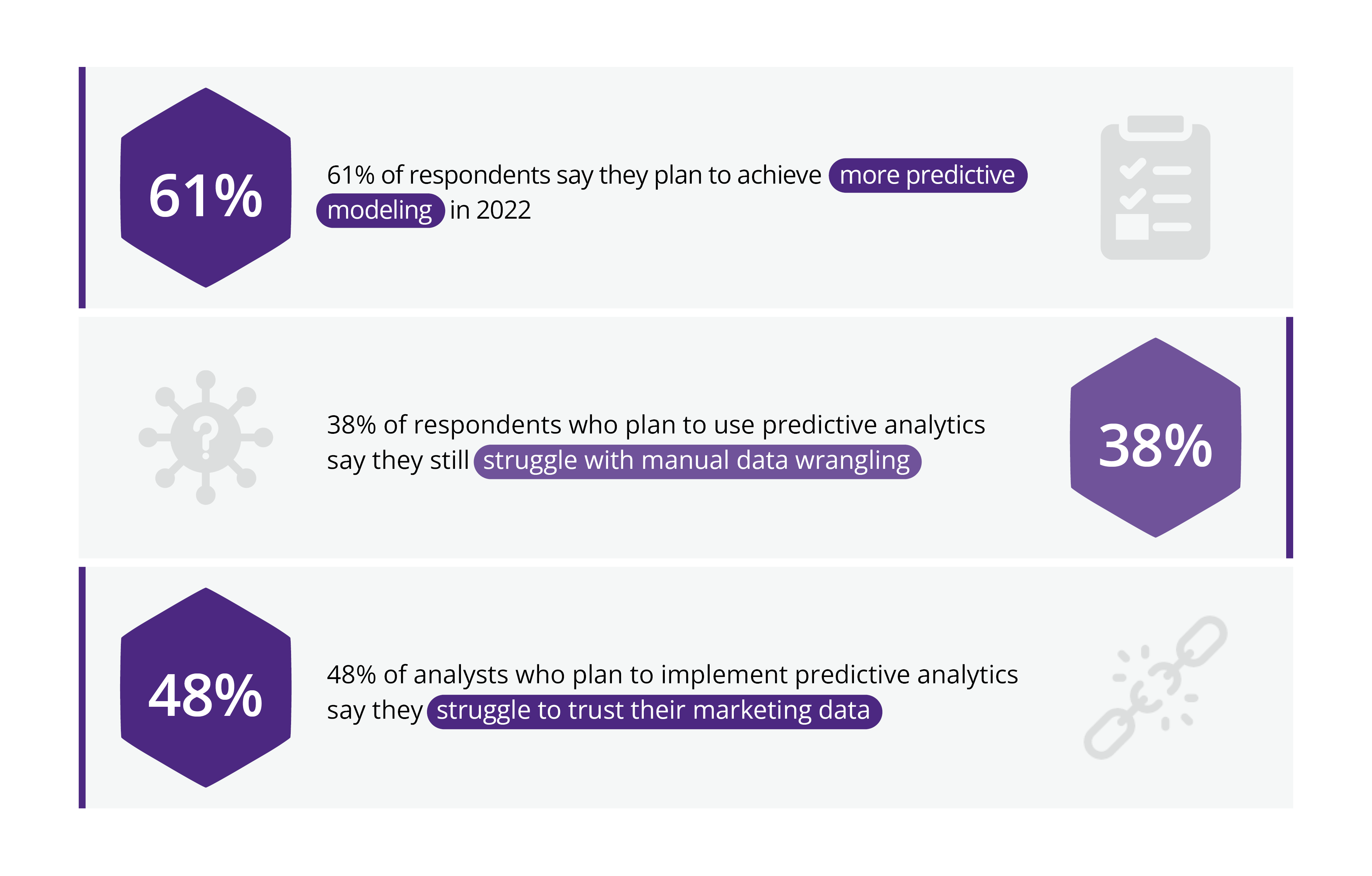Today’s marketers don't need millions of dollars, or a complex, enterprise-like tech stack to optimize budgets and improve performance. Martech has leveled the playing field.
Mid-size and even small businesses can now compete with the massive companies that have teams of BI analysts poring through their data every day. Even sophisticated analysis like predictive analytics and AI which were once the playgrounds of the enterprise titans are now viable options for SMEs.
As martech evolves, these capabilities are becoming increasingly accessible to smaller players - and they know it too. Some 61% of marketing departments say they aim to achieve some level of predictive analytical capability in 2022.
Marketers’ current data capabilities
While many marketers see technology as a silver bullet to all their data issues, there is still work to be done before they can truly garner the insights they need to run effective, data-driven marketing campaigns.
58% of marketing teams are still building their marketing reports using spreadsheets, despite the fact that BI tools and data dashboards are much quicker and far more accurate.
However, it is not just about what platforms marketers are using to pull their reports. The data issues go far deeper, with only 43% of marketers having a centralized source of marketing data. This makes locating accurate data for reports even more time-consuming - so it’s no wonder that marketers’ main challenge in 2021 was time and resources spent on manual data integration for routine reporting.
While it's not impossible to run predictive models without some level of automated data integration, the amount of data and the complexity of it means that you will be wasting so much time to run a single model it is not affordable.
On top of the waste of resources, manual integration also increases the chances of human error. Our research found that analysts who struggle with manual data integration are nearly four times as likely to struggle with low trust in data accuracy.
In 2022, 61% of marketing teams plan to achieve more predictive modeling. But 38% of those that plan to use predictive analytics state they are still struggling with manual data wrangling. And even more worrying still, almost half are still struggling to trust their data.

Put simply, for that 38% there is no point in even trying to run predictive analytics while still manually wrangling data. It takes too long and undermines data quality.
Creating a culture of data
While the technology is now available for SMEs to automate integration and glean new insights from marketing data, many marketers are still not aware of the basic measures they need to take before they can get the best out of their technology. Besides improving data accuracy and ditching manual processes, companies need to think carefully about how to instill a data-first culture so that their new martech actually gets used.
Marketers might have the greatest tech stack in the world, feeding them business-changing forecasts on ad spending, delivering real-time performance data - but if this isn’t translating to actions, then it’s useless.
A recent thesis paper from Dany Eid, Director of North America at Adverity, discovered that investing in data maturity can improve financial performance. But there’s a catch: it only works for companies who invest both in their tech and in their culture.
In his paper, Dany Eid writes, “Skewed investments lead to either having digital systems that few know how to use or a data literate workforce with no adequate infrastructure to leverage the data within their organization.”
Aligned with Martech, there needs to be a cultural shift within the organization that starts at the top.
The future of martech
The access to advanced analytics that martech provides not only levels the playing field between businesses of different sizes, it’s also impacting how marketing departments are structured.
The next decades will see data-first culture picking up momentum, as evolving technology continues to drive how people think about their marketing strategy. Tech will inevitably become more marketer-friendly, and increasingly accessible. And in turn, this democratization of data will see a rise in the need for more data-savvy marketers.
We’re already seeing marketers demand this, and the shouts will continue to get louder.
However, while the technology is now readily available, there is still work to be done. It is not a case of buy it and the insights will come. Teams still need to ensure that their data is accurate, and their company culture is ready before layering more technology onto their stack.










